[Editor’s Note: In mid-2016, Dominic Golding visited various parts of Canada and New York in the USA. In this photo essay, Dominic sketches through prose and poetry the different ways that multiculturalism looks between cities, and in comparison to Australia. All images are copyrighted to the author of this piece, Dominic Golding.]
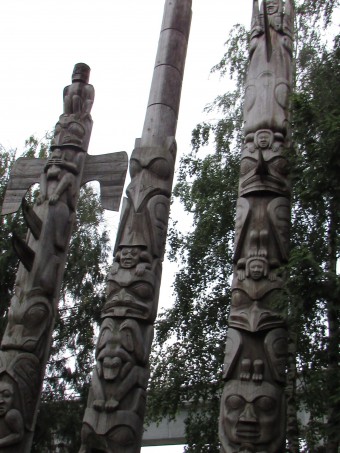
I have had many cosmopolitan eating experiences, like having French crème broche in Winnipeg or Caribbean jerk chicken in Toronto. Multicultural policy in Canada and USA is not just individual consumption. It is embedded as social policy inside cultural institutions, and promoted by companies. It is not about elimination of racism alone. It is about acknowledging difference with our fellow country citizens. Ethnicity is part of the national fabric. Recognising gender, sexuality, ethnicity, and disability is recognising certain rights. Multiculturalism seeks to minimise social barriers to integration. These photos are a snap shot of multiculturalism at work.
Welcome to Country
My first and last sights coming out of Vancouver airport were totem poles, sculptures and art crafts by the First Nations of British Columbia.
Signifying place, determining presence… There no room for denying the existence of a living heritage, which is indeed part of Canadian pride.
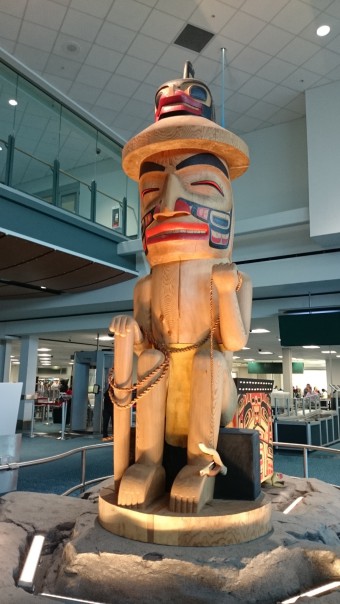
***
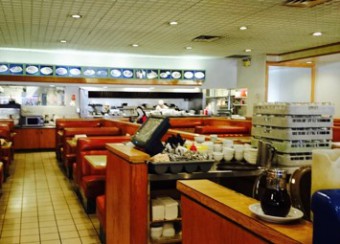
Back in the 80s
My partner and I went Canadian Chinese Chop Suey
Chinatown diner meets Happy Days
The lit photos of dishes, booths
The table sized menu yelled out “baked cheese and ox tongue with spaghetti, stir fried assorted meat w Lai Fun and Love bird fried rice”
We settled for skewers and wings washed down with a red bean and pineapple cooler.
***

Smoke, muskets and gunships
In 1812, Canadians and Native Indian (First Nation) Canadians under the British Empire fought US expansionists. They fought for control of the shipping routes of the Great Lakes. Control of the waters, control of the ports, control of fur trade, equalling control of the borders.
***
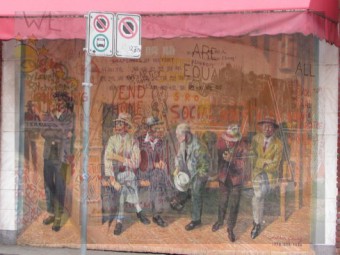
Gastown
Chinatown was once a hub of commerce and activity. Chinese who stayed after building the railways and digging for gold. Now the Chinatowns are in the suburbs.
In the suburb of Richmond, 50% of the population is Chinese.
East Hastings is a place traditionally known for affordable housing from a history of settlement worker labour via the Hudson Bay Company. East Hastings, the gentrification of Chinatown, poverty, and the fight to retain Chinese cultural presence are all intertwined.
Linked to the erosion of Canadian Human rights and Multiculturalism under attack from Stephen Harper’s neoliberalism resulted in increased homelessness and the Chinese elderly being forced out as the yuppies and hipster cafes have moved in…
***
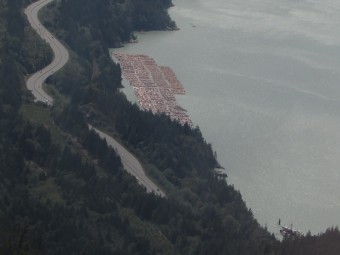
Logging, labor, pristine wilderness.
Canada, the Rockies, red brimmed hat Mounties, a caribou running through the snow.
Parks are also colonial projects. British and French companies consume the natural resources over logging and fur and salmon. Settlers chase off tribes, while tourists steal “found” artefacts, souvenirs.
Throughout the park there was a strong acknowledgement of Indigenous presence past, present and future.
***
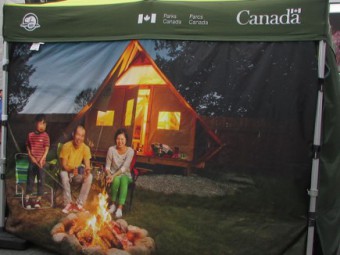
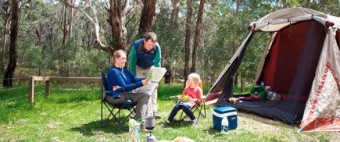
The first image above is from a promotional stall for Parks Canada in Toronto. The second image is from Parks Victoria website on camping sites. Note the difference in representation.
The young park ranger at the Dundas Square stall was of African descent. She told us of her favourite spots to go walking, camping and fishing. She said it as if migration were not separate to the natural environment. This exchange highlighted Canada’s multicultural policy as being about migrants having ownership of and presence within national landscape. This landscape is culturally habituated.
***
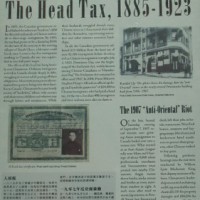
The Color line was global. Australia’s Immigration Restriction Act 1901 is the USA’s Chinese Exclusion Act 1882 is the Canadian Chinese Immigration Act 1885.
I went on the Prohibition tour with a local historian, I learnt that in 1907 the Asiatic Exclusion League wanted a White Canada. They organized three anti-Oriental riots, first targeting the Chinese, smashing stores and damaging property in Chinatown. Then they started to move towards the Japanese quarter. By then. the Japanese fortified their businesses, and armed themselves with knives, broken bottles and guns.
A miner fired a gun at the barriers built by the Japanese, armed with rifles they fire back into the crowd of miners. I was told people died that day. To prevent further race riots the government brought in a Chinese head tax.
This was adopted by both USAmericans and Australians.
***

Hastings Park. Now a theme park.
On the outbreak of WWII
Japanese Canadian men and boys were separated from the women and children.
The men and boys were detained in the old roller skate rink and exhibition hall, while the women and children were detained in the animal barn at the old show grounds.
Before being sent to the interior, the Japanese had their possessions, properties, businesses and boats confiscated and assets sold to pay for the Japanese internment camps.
Both the Chinese and Japanese asked for readdress
Both got reparations.
***
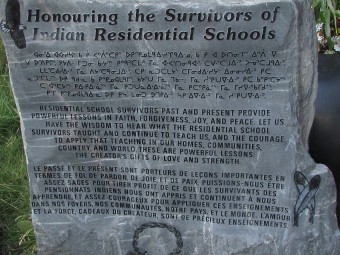
Outside the Canadian Human Rights Museum is a Peace Walk.
Two of three languages on the memorial are the official languages of bilingual Canada.
All three languages explain a trauma of separation and forced removal of First Nations and Metis (“half”) children to residential schools.
“To kill the Indian in the child. “
***
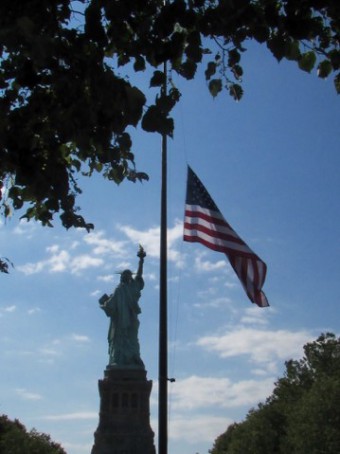
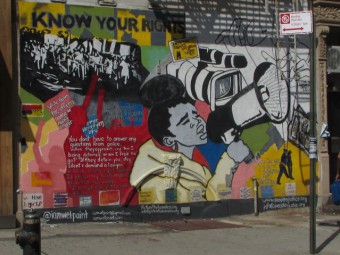
The Flag at half mast
Loss of life
The loss of 5 police officers
flag is flown at half mast
Hearing the daily news of another Black person
killed by whites felt like the days of Jim Crow black men died by lynching.
Today, bullets.
***
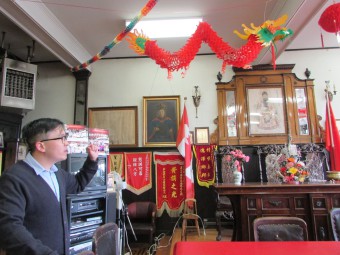
One China, one China diaspora.
This was the first time I’ve walked into both an Indian (First Nations) reservation and a Chinese association.
Both communities are fighting colonization and neoliberalism.
Buildings in Chinatown go vacant, and developers are finding the archives of Chinese clan associations.
Archives the PRC folks would like to own…
There is a soft power cultural takeover of associations and societies by Chinese Mainlanders resisted by local Chinese Canadians, resisted by the descendants of Gold Rush Cantonese Canadians.
***
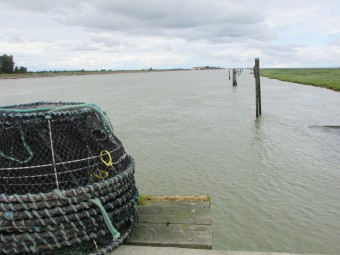
The Musqueam is led by an elder who is half-Chinese, a father who was a gardener on the reservation. The First Nations Indians are also fighting for land recognition from developers.
The Chinese and First Nations Indians experienced forced isolation, suicide and ongoing detrimental trauma from residential schools.
Despite the inclusion of Indigenous rights in the Canadian Multiculturalism Act, the battle on the reservations, is still a war, still ongoing.
Over land, over oil, over water, over fishing rights, over casinos
Over self determination and survival.
***
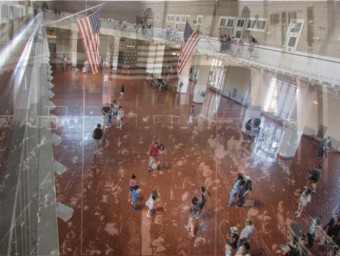
Two symbols of the US of America
After visiting the Statute of Liberty, the ship docks in at Ellis Island.
Tourists as migrants examining migrants as tourists.
As the European migrants could never enter a castle of the old world, they told the architect to build another so migrants could enter the castle of a new America.
But before they could catch the ferry to Little Italy or Little Odessa
They needed to answer some questions like:
Are you a polygamist? Are you an anarchist?
How many stripes are on our flag? How many stars?
Which President freed the slaves?
Or
Are you able to read and write?
***
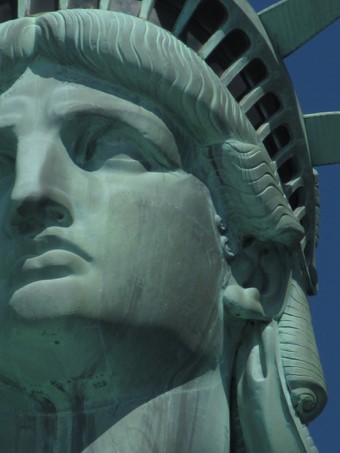
The Statue of Liberty
She faces across the water
As if she greets the Immigrants docking on Ellis Island
But as we see in the exhibitions
The ideas of push and pull
The xenophobia and labour fears
Demands to show loyalty for your Liberty
To demonstrate economic mobility and prosperity
Her face tells newcomers of hope and dreams in the USA
***

Guarding the shores of Manhattan.
Watching from Battery Park and old fortress is an
Eagle.
Donald Trump screams on about a wall between Mexico and the USA, impoverishment and criminalisation of undocumented immigrants, whilst (ex-)President Obama silently deported undocumented migrants and adoptees without citizenship.
People like me.
***
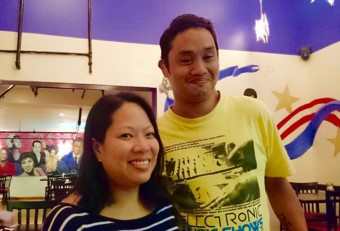
Two war babies meet on Malcom X
Vietnamese Chinese adoptees 4th cousins apart
Find each other
through DNA
Meet on 135th Street Harlem, NY
She is a creative like me & proud to say “we are blood relatives”
Sometimes taking chances is worth it
To know family
Nuclear is not the gold standard
They can be extended, extended, extended.
It’s how families have always been.
***
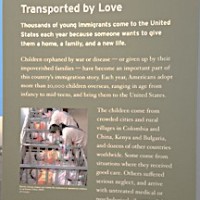
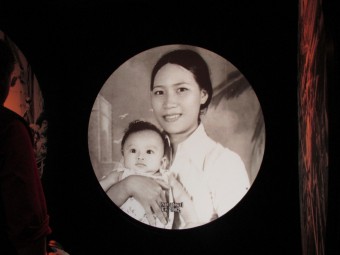
Adoptions are never included in the stories on refugees or migrants.
Adoption is never about dislocation and separated families
Fleeing conflict or dictatorships
But see my narrative on the walls of Ellis Island museum
As part of the greater migration narrative
As a shock
Adoption was just about forever families
Rainbow families
New families
Happy families
***
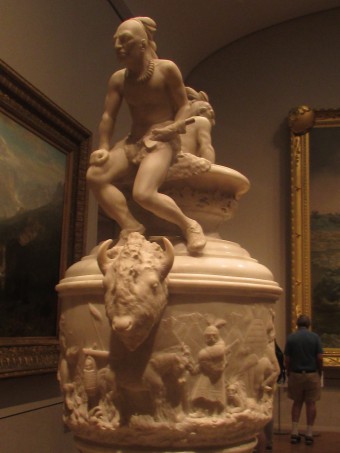
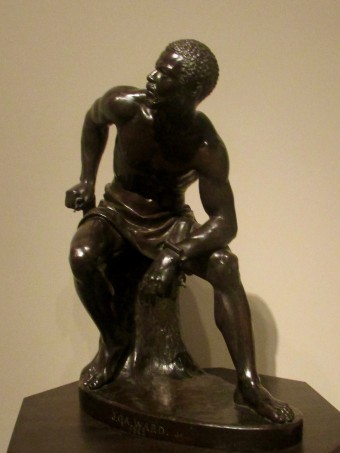
To the MET our bodies show colonialism and anthropology as art. Whether you are an Indian, African American slave or Oriental. Our bodies prove race. It justifies the settler colonial society, an environment they have made yet cannot control.
“Melting pot” (USA) or “Mosaic” (Canada) are
both settler terms too.
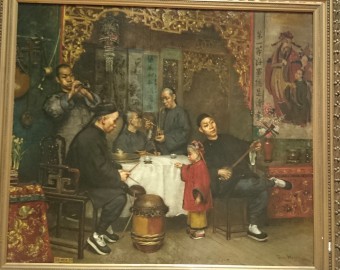 ***
***
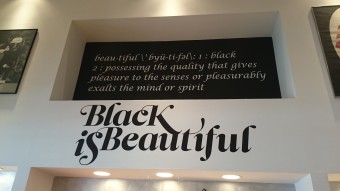

Diversity. Not only in the adverts but also on the shop floor.
Participation is not just cultural it is economic. Canadian multiculturalism says you are valued and race must not be a barrier to being in the workforce. Diversity is good for business it goes as far to say it is a human right. And I, as the consumer, am valued as a consumer.
At Studio Harlem, the bodies are contemporary. They are the present. They are not a fiction like those at the MET. They are art works by contemporaries. By having “Black is Beautiful”, the Museum not only counters the negative but also affirms “Black Lives Matter”.
***
The Asian Australian Democracy Caucus (AADC) is a non-partisan organisation. One of our ongoing commitments is to contribute a monthly blog in collaboration with Peril magazine. To find out more about this collaboration read here. If you want more information or would like to write for us, get in touch with us, Shinen Wong or Karen Schamberger at [email protected]

